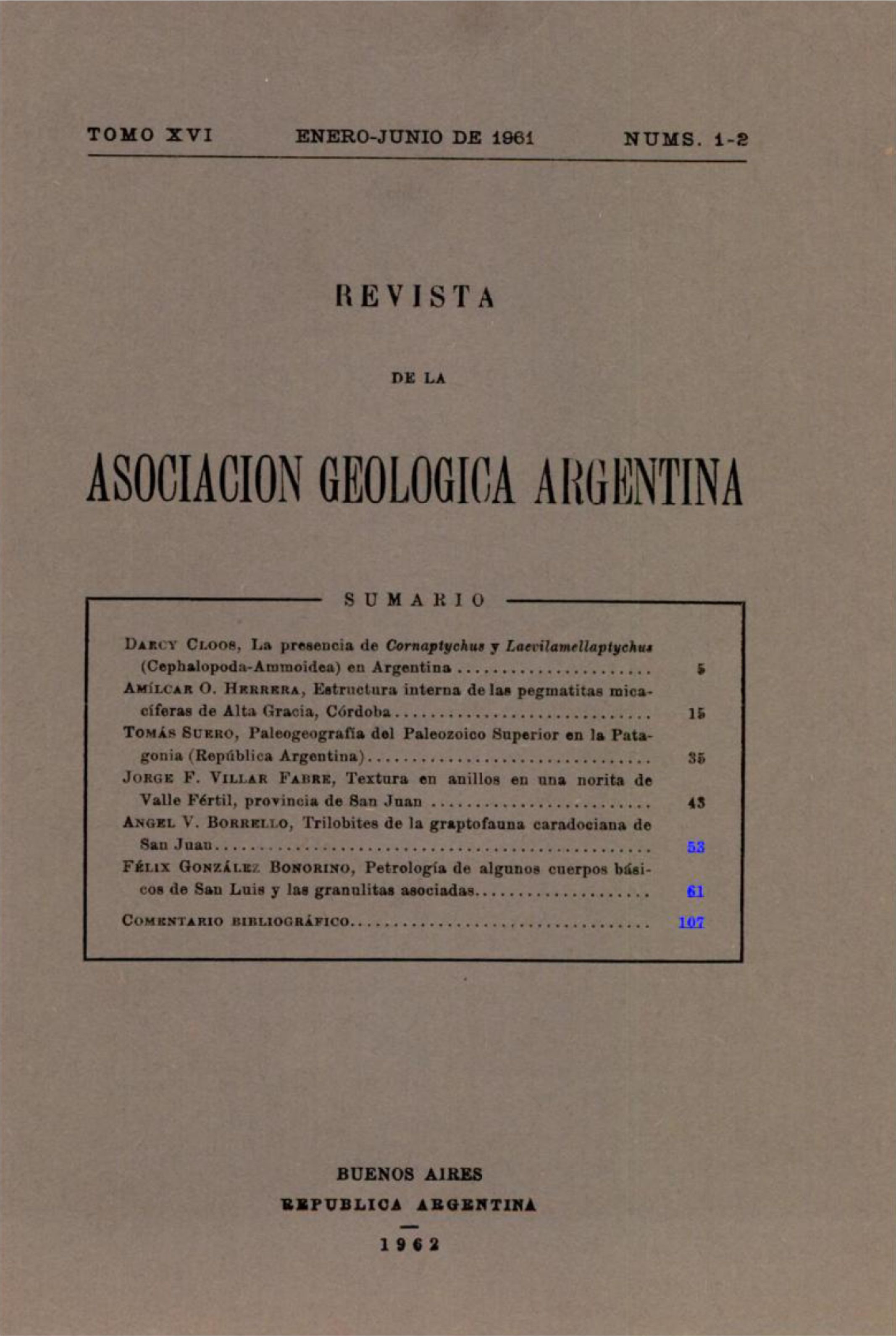Petrología de algunos cuerpos básicos de San Luis y las granulitas asociadas
Main Article Content
Abstract
In the Sierra de San Luis of Central Argentina there is an approximately north intruded conformably in a granulitic complex of Precambrian age. The bodies south trending belt of basic igneous rocks, formed by clusters of lens-shaped bodies —some of them divided into sob-units by discontinuous sereens of country rock—measure from several meters to about 5 kilometers in length. Two of the larger bodies were studied: one (Virorco) is a composite pluton intruded inside a vertically plunging fold in the granulites; the other (Las Aguilas) is a smaller, simpler body with a few parallel satellite dikes. Conformable contacts are almost universal, but local irruptions through internal sereens are seen. The dominant rock type is a bytownite-broncite-hornblende gabbro, medium- to fine-grained, with local coarse-grained ultrabasic differentiates. An outer zone of quartz-ziotite-norite is characteristic, regardless the size of the body. Tn the. largest units, thin alternating bands and lenses of hornblende4ree and hornblende rich norite may be found close —and parallel— to the contact, A coarser, more obscure banding is found within the main. body at Virorco, by alternation of the main facies (horn blende norite) with a coarse grained, plagioclase-poor pyroxene hornblendite. Tn the upper level of the central, more massive part of the main body, the banding appears as a flat-lying layering. At Las Águilas, the ultrabasic facies (hytownite-broncite-hornblendite) forms a small asymmetrical core.
Article Details

This work is licensed under a Creative Commons Attribution-NonCommercial 4.0 International License.
Nota de copyright
Los autores conservan los derechos de autor y garantizan a la revista el derecho de ser la primera publicación del trabajo licenciado según una licencia de atribución Creative Commons que permite a otros compartir el trabajo con el reconocimiento de la autoría y de la publicación en la que se publicó por primera vez.
Declaración de privacidad
Los nombres y direcciones de correo electrónico introducidos en esta revista se usarán exclusivamente para los fines declarados por esta revista y no estarán disponibles para ningún otro propósito u otra persona.

